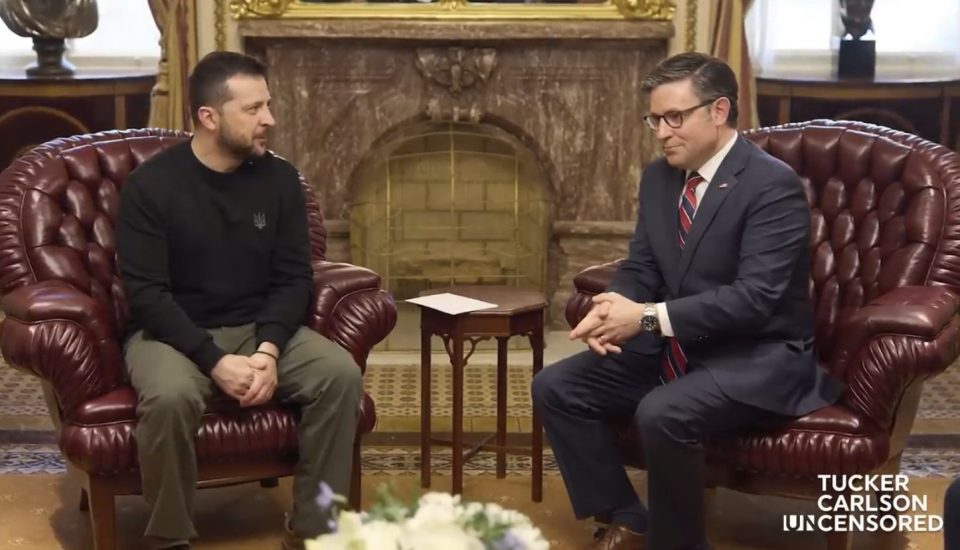COMMENTARY: 500 Years of division in Western Christianity: How St. John Paul II’s trenchant teaching opens the way toward unity in the Body of Christ.
(October 31st marked) the 500th anniversary of the day that, as the story goes, a young Catholic priest named Martin Luther nailed his “95 Theses” to the door of Wittenberg Castle. To say the series of events that that one action set in motion have had a monumental impact on Western civilization would be a gross understatement.
We have every reason to hope — not in the sense of wishful thinking, but with the certainty of “the hope that does not disappoint” — that Christ’s prayer that all his followers “will be one” will someday be answered. One great sign that the journey toward unity is, in fact, underway is the 1999 Catholic-Lutheran “Joint Declaration on the Doctrine of Justification.” Effectively putting an end to Luther’s main protest, this landmark agreement stated:
We confess together that all persons depend completely on the saving grace of God for their salvation. …[They are] incapable of turning by themselves to God to seek deliverance, of meriting their justification before God, or of attaining salvation by their own abilities. Justification takes place solely by God’s grace.
It’s quite a commentary on the complexities of human life and discourse that it took 482 years for Catholics and Lutherans to agree on this point. Neither side changed its essential position. Rather, we finally agreed on a vocabulary that allowed us to recognize that — at the expense of multiple wars and immeasurable upheaval — we’ve basically been talking past each other for 500 years. Lord, have mercy! And, of course, the good news is — he does.
Another sign that the journey toward unity in the Body of Christ is underway is the spread of St. John Paul II’s theology of the body (TOB) across denominational lines. While the majority of my work promoting this incredibly liberating teaching is within the Catholic Church, I’ve spoken in countless Protestant communities over the years where John Paul II’s TOB is met with keen interest and great enthusiasm.
Others who promote John Paul II’s teaching and keep tabs on its spread can attest to the same. This bodes well for the reunion of Christ’s followers, not only because it has created a certain warmness among believers of different stripes and a new level of openness on the part of Protestants to papal teaching, but because the content and theological genius of the TOB takes us to the very heart of the divisions in the Body of Christ and opens the way to their healing.
I’ll never forget hearing Father John Hardon, a much-respected Jesuit theologian of the 20th century, state plainly in a lecture that all divisions in the Body of Christ can be traced to disputes about the nature of marriage. He didn’t have much time to back it up (it would take a doctoral dissertation to do a thorough job), but I immediately sensed the truth of his claim. It lies in the “great mystery” proclaimed by St. Paul in Ephesians 5:31-32: “‘For this reason a man shall leave his father and mother and be joined to his wife, and the two shall become one flesh.’ This is a great mystery, and it refers to Christ and the Church.”
If this is more than just poetry, but has (as the Church has always understood it to have) real theological gravitas, then the way we understand and live our bodies as male and female, and the way we live and understand marriage, has a direct impact on our Christology (our understanding of Christ) and our ecclesiology (our understanding of the Church).
Conversely, the way we understand and live Christology and ecclesiology has a direct impact on our understanding of our bodies and of marriage. This means disputes in ecclesiology and Christology will ipso facto involve disputes about the nature of marriage and vice versa.
When Luther left the Catholic Church to start another community of Christians, he introduced a rupture into the family of God, a divorce of sorts into the mystical marriage of Christ and his Church. Or, another way to look at it would be this: The scandal of the Reformation is that Christ’s followers made the Divine Bridegroom out to be a polygamist — 30,000 times over in the course of these 500 years, if estimates of the number of denominations is correct.
I don’t fault Luther for the large majority of his protests. In fact, the Council of Trent agreed with most of his theses. The family of God — then, as now — was full of real problems and corruption that Luther was correct to point out. I only wish he hadn’t left the family and started another one. The reasons he left, of course, are complex. An intransigence on both sides became so thick that a miracle of grace would have been necessary to prevent Luther’s departure.
The failure of both Catholics and Protestants to be open to that miracle of grace is the real tragedy and scandal of the rupture that was introduced into the Church in the West.
Rupture in the body calls for a redemption in the body, and that calls for a proper theology of the body. Hence, while St. John Paul II worked tirelessly to build unity among Christians in other ways — he publicly repented on behalf of those Catholics whose sins led to division in the first place and he reached out repeatedly to Protestant and Orthodox leaders, even asking them to help Rome “re-envision” the papacy so that it could more effectively serve the needs of all Christians — history may recognize TOB as John Paul II’s most important ecumenical contribution.
If we are all to be “one body in Christ,” this makes sense, as Pope Benedict XVI wrote in a pre-papal essay, “only against the backdrop of the formula from Genesis 2:24: ‘The two shall become one flesh’ (see 1 Corinthians 6:17). The Church is the body, the flesh of Christ, in the spiritual tension of love wherein the spousal mystery of Adam and Eve is consummated.”
The rupture that entered Adam and Eve’s marriage with the fall is writ large in the rupture that entered the mystical marriage in which Christ’s followers participate. By injecting the healing we need into the very heart of the divisions that have entered the former, St. John Paul II’s TOB paves the way to the healing we need in the divisions that have entered the latter.
Yes, one day there will be one Christ loving one Bride. On that day, “all will be one” as Christ and the Father are one.
Christopher West is the founder and president of The Cor Project, a global membership and outreach organization devoted to helping men and women learn, live and share the theology of the body in compelling, life-transforming ways. The Cor Project exists to help spread St. John Paul II’s theology of the body across denominational lines and across the world. To learn more, watch a short film here. To hear how Christopher West presents TOB to a Protestant audience, consider listening to this series.







